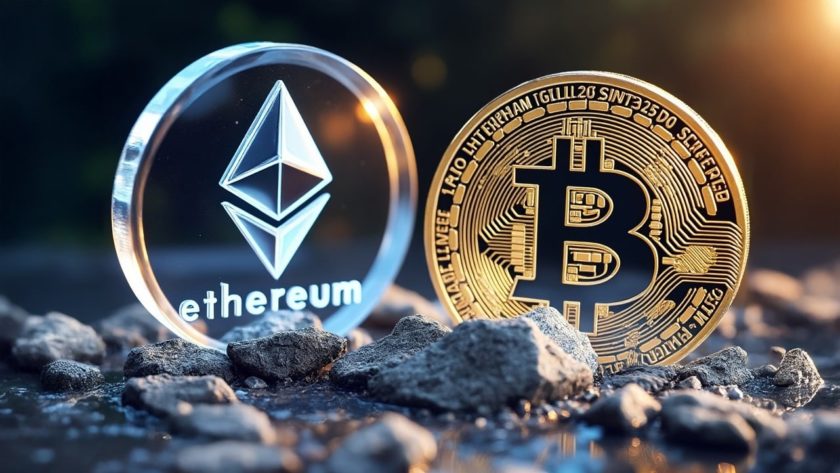Initial coin offerings (ICOs) may be less fashionable than security token offerings (STOs) right now, but that hasn’t stopped the United States Securities and Exchange Commission (SEC) from keeping its beady eye trained firmly on them. Ever since it published its investigation into the decentralized autonomous organization (DAO) in July 2017 and declared that ICO tokens can be (and often are) securities, it has been producing a variety of guidelines and warnings on ICOs for investors.
Initially, its notices were used to emphasize the potentially fraudulent or dangerous nature of initial coin offerings, with its first-ever Investor Bulletin on ICOs concluding with a summary of “potential warning signs of investment fraud.” However, even if it followed this up with a number of investor “alerts,” its current guidelines have taken a more balanced tone, treating ICOs as an established feature of the financial landscape that may nonetheless require a certain degree of diligence on the part of investors.
And on the whole, the industry welcomes this newfound balance, as well as the more measured approach the SEC has taken to crypto. That said, certain industry groups are calling for additional and clearer guidance from the SEC, since there’s a feeling that certain grey areas still exist in the commission’s classification of cryptocurrencies, with the Blockchain Association speaking of a “growing sense of urgency” that such questions be soon resolved.
Current guidelines
Even though the SEC’s updated guidelines have reportedly been available since last March, it only recently began promoting them on social media, with tweets from February and the end of November inviting the public to learn five things it needs to know about initial coin offerings.
For the most part, these five points don’t present any radically new information, even if they might prove useful to ICO newcomers. Nonetheless, their presentation as digestible nuggets of info — rather than as sections of longer reports or statements — reveals an appreciation on the SEC’s part that cryptocurrencies are being sought out by “regular” consumers, as well as by experienced traders interested in alternative financial instruments. And such a realization is borne out in the basic, easy-to-understand format of the five guidelines, as shown and explained below:
- “ICOs can be securities offerings.” This is essentially a warning that cryptos offered in a token sale may fall under the jurisdiction of the SEC, and may therefore need to be registered with the commission.
- “They may need to be registered.” Once again, another warning that some tokens may need to be registered with the SEC.
- “Tokens sold in ICOs can be called many things.” A warning that simply having a different or unusual name won’t stop a token from being classified by the SEC as a security.
- “ICOs may pose substantial risks.” A warning that some ICOs may be scams. This point also includes a warning that, even if an ICO isn’t fraudulent, sold tokens are at risk of being lost, hacked or having their prices manipulated.
- “Ask questions before investing.” Advice urging consumers to obtain clear answers to any questions or concerns they might have before buying any tokens.
The SEC’s guidelines also include four additional pointers each for investors and “market professionals” (i.e., exchanges, brokers). With regard to the extra investor advice, this expands upon the points made in the five warnings above. For example, investors are encouraged to research how tokens will be traded, to research the individuals and companies offering the tokens, to be aware that tokens may be traded internationally (and may therefore escape the SEC’s enforcement), and to be suspicious of offerings that are “too good to be true.”
Conversely, market professionals (i.e., exchanges) are advised in the additional guidelines specifically for them to uphold securities laws, to register if they sell securities, and to ensure that they protect the interests of investors and their customers. As with the guidelines for investors and the general public, most of the emphasis is placed on the fact that tokens can be — and frequently are — securities, given that they often promise future returns (one of the key components of the Howey Test).
And while there are still certain issues left to be resolved (see below), this emphasis on the applicability of securities law is welcomed by the Blockchain Association’s Kristin Smith, with the director of external affairs for the Washington D.C.-based lobbying group telling Cointelegraph that the SEC’s latest guidelines are a positive step for the industry.
“It’s helpful that the SEC has been clear that organizations using tokens to raise funds must comply with securities laws, but the nature of these projects means that there is still a grey area for some tokens. We think that makes a lot of sense that some tokens be treated as securities because it helps close the information gap between investors and creators of a project. It’s a complex environment, so having some clarity on that issue is key.”
Softening up
Despite containing plenty of warnings about the risks of ICOs, the SEC’s latest guidelines appear to represent a tangible step forward in terms of treating crypto as a legitimate area of investment. Back in the first half of 2018, SEC Chairman Jay Clayton was talking about being “shocked” by the level of fraud the commission had encountered in the ICO space, while at the same time, announcing and applauding efforts by Canadian and American securities officials to crack down on ICO-related scams. He said in April at a conference in Chicago:
“The fraudsters flocked to the new and attractive space. I guess that shouldn’t surprise me, but it does.”
Such public remarks gave the impression that the SEC regarded ICOs as a mostly illegitimate vacuum in which opportunists were effectively robbing the gullible. And even though some of Clayton’s early remarks indicate that the SEC saw genuine potential in token sales, official statements and bulletins from the commission reinforced this impression. In July 2017, for instance, the SEC issued an “Investor Bulletin,” which contained many of the same pieces of advices as those given in the latest guidelines, yet the two concluding sections of the statement focused exclusively on fraud.
“If fraud or theft results in you or the organization that issued the virtual tokens or coins losing virtual tokens, virtual currency, or fiat currency, you may have limited recovery options. Third-party wallet services, payment processors, and virtual currency exchanges that play important roles in the use of virtual currencies may be located overseas or be operating unlawfully.”
Similarly, in August 2017, it published another Investor Alert that not only concentrated on ICO scams, but also apprised would-be investors about the danger that sold tokens would be subject to “pump-and-dump” and market manipulation frauds. The alert declared:
“The SEC’s Office of Investor Education and Advocacy is warning investors about potential scams involving stock of companies claiming to be related to, or asserting they are engaging in, Initial Coin Offerings (or ICOs). These frauds include ‘pump-and-dump’ and market manipulation schemes involving publicly traded companies that claim to provide exposure to these new technologies.”
Over the course of 2018, the SEC adopted a gradually less stringent and suspicious attitude toward ICOs and crypto, even if the commission reported in November that it investigated dozens of token sales in the previous 12 months, and even if it closed down a handful of coin offerings. This relative softening is apparent in its latest guidelines, but it’s also apparent in some of the recent speeches and pronouncements given by SEC officials, as highlighted by Smith.
“In general, the SEC has taken a measured approach as they assess how to regulate crypto tokens. As an industry, we think a couple of recent speeches set the right tone: Director Bill Hinman spoke on the topic of decentralization last June and Commissioner Hester Peirce gave a general assessment of regulatory issues earlier this month.”
The assessment Smith is alluding to here was when Peirce stated that the SEC’s delay in coming out with clear, decisive regulation should give the crypto industry more leeway to mature according to its own internal dynamics and logic. While Peirce — or “Crypto Mom,” as she’s often referred to — is one of the more crypto-friendly individuals at the SEC, her comments at least offer indication that there are now people at the commission who view the industry positively, and don’t want to restrict or warn against it.
It’s likely that such a softening of the SEC’s sentiment goes hand-in-hand with two things. First of all, having taken a harder line on ICOs towards the end of 2017 and through 2018, the Commission can now feel assured that it has a better handle on coin offerings, and that it can be more moderate and measured in its declarations.
Secondly, the fact that the ICO and wider crypto markets have settled down over the past few months has also helped to relax the SEC’s attitude, even if it still prefers to highlight the risks rather than the benefits of ICOs. This is something that has happened with United Kingdom regulators, for example, and it’s also something that has been helped by exchanges and token issuers, which have eagerly sought to gain either licensing or exemption status from the SEC.
For instance, research published by MarketWatch in January found that there had been a 550 percent increase in 2018 in companies seeking authorization from the SEC to hold token sales. If nothing else, this rise has shown the SEC that, even if there are scammers out there, the industry is, on the whole, a very serious one.
More detail please
But even though the SEC has, over time, placed less emphasis in its notices on the potentially fraudulent aspects of ICOs, the crypto industry still isn’t entirely satisfied with its current guidelines and with its current approach. The Blockchain Association, for one, is satisfied that the commission’s latest advice on ICOs has been simplified and made more accessible, yet Smith reports that the trade association is calling for greater clarity from the SEC on just when exactly tokens are and aren’t securities.
“We do urgently need additional, detailed guidance on how tokens that we used in decentralized networks should be classified. There’s a strong argument that they shouldn’t be considered securities. This is the biggest question that the industry and regulators are grappling with today.”
So far, the SEC has acknowledged that at least some cryptocurrencies (e.g., Bitcoin and Ethereum) aren’t securities, while recent speeches have taken a more favorable stance toward crypto. However, Smith asserts that this doesn’t go far enough for the industry and doesn’t provide it with enough certainty for the future.
“These speeches are not formal guidance and there remains a growing sense of urgency that we need to answer the outstanding questions soon, because that lack of clarity is preventing developers from pursuing projects here in the United States. The questions before the SEC are very complex. Their position has become clearer over time, but there are still outstanding questions that need to be answered.”
It isn’t entirely clear when the outstanding questions will be answered, something that may be disconcerting for any startup or company flirting with the idea of having a token sale. Still, other industry voices agree with the Blockchain Association in affirming that the SEC nonetheless has a more or less balanced approach to ICOs and to crypto, and hasn’t tried to be too restrictive. This is the view taken by Iqbal V. Gandam, the chairman of CryptoUK:
“I think the approach is balanced. They [the SEC] have not said that they are a poor/risky investment, but simply stated that the investor needs to be cautious – as is true with other investments. I also do not feel they view all crypto to be securities. They have linked to a recent hearing/article which highlights a particular crypto [the 2017 DAO investigation] and how it was deemed to be a security. So again being cautious but at the same time giving freedom to token creators.”
The SEC may not have issued formal guidelines or rulings on ICOs, but Gandam’s comments support the idea that it has, despite the initial wariness of ICOs, given them space to operate and grow. Of course, it’s still arguable that crypto could grow even faster if the SEC produced detailed formal guidelines, but for now, its current advice shows that it has reached a grudging acceptance of token sales, since otherwise it would have warned investors and consumers away from them altogether.




